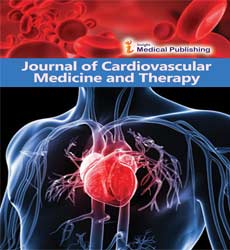The implication of platelets in aortic valve calcification
Abstract
Calcific aortic valve stenosis (AS) is the most prevalent valvular heart disease and the third most frequent cardiovascular disease after coronary artery disease and hypertension. Natural evolution of AS is characterized by a period of asymptomatic progressive valve calcification, which eventually leads to the development of a severe stenosis and to the onset of symptoms. Both in vivo and in vitro research has revealed that increased platelet activity is involved in the pathogenesis of AS, and can also be used as an indicator of AS severity. TGF-β1 enhances glycosaminoglycan (GAG) elongation, primarily located in the spongiosa layer of aortic valve, which increases lipid retention in the ECM. Lipid retention leads to the oxidation of lipid species which can activate the NF-κB pathway, leading to valve interstitial cells (VIC) osteogenic transition. Simultaneously, ADP released from activated platelets causes increased autotaxin (ATX) expression and release from VICs. ATX associates with platelets and ultimately assists in the conversion of lysophosphatidylcholine (LPC), a product of oxidized lipoproteins (Lp) and activated platelets, to lysophosphatidic acid (LPA). LPA binds to surface receptors on VICs causing signaling that activates the NF-κB pathway, leading to VIC osteogenic transition. Therefore, ADP released by activated platelets leads to LPA formation, enhanced by the availability of lipids retained in the ECM due to released TGF-ðÂ?½ðÂ?½1, which activates the NF-ðÂ??ðÂ??B pathway in VICs promoting osteogenic transition and thus mineralization of aortic valve.
Open Access Journals
- Aquaculture & Veterinary Science
- Chemistry & Chemical Sciences
- Clinical Sciences
- Engineering
- General Science
- Genetics & Molecular Biology
- Health Care & Nursing
- Immunology & Microbiology
- Materials Science
- Mathematics & Physics
- Medical Sciences
- Neurology & Psychiatry
- Oncology & Cancer Science
- Pharmaceutical Sciences
